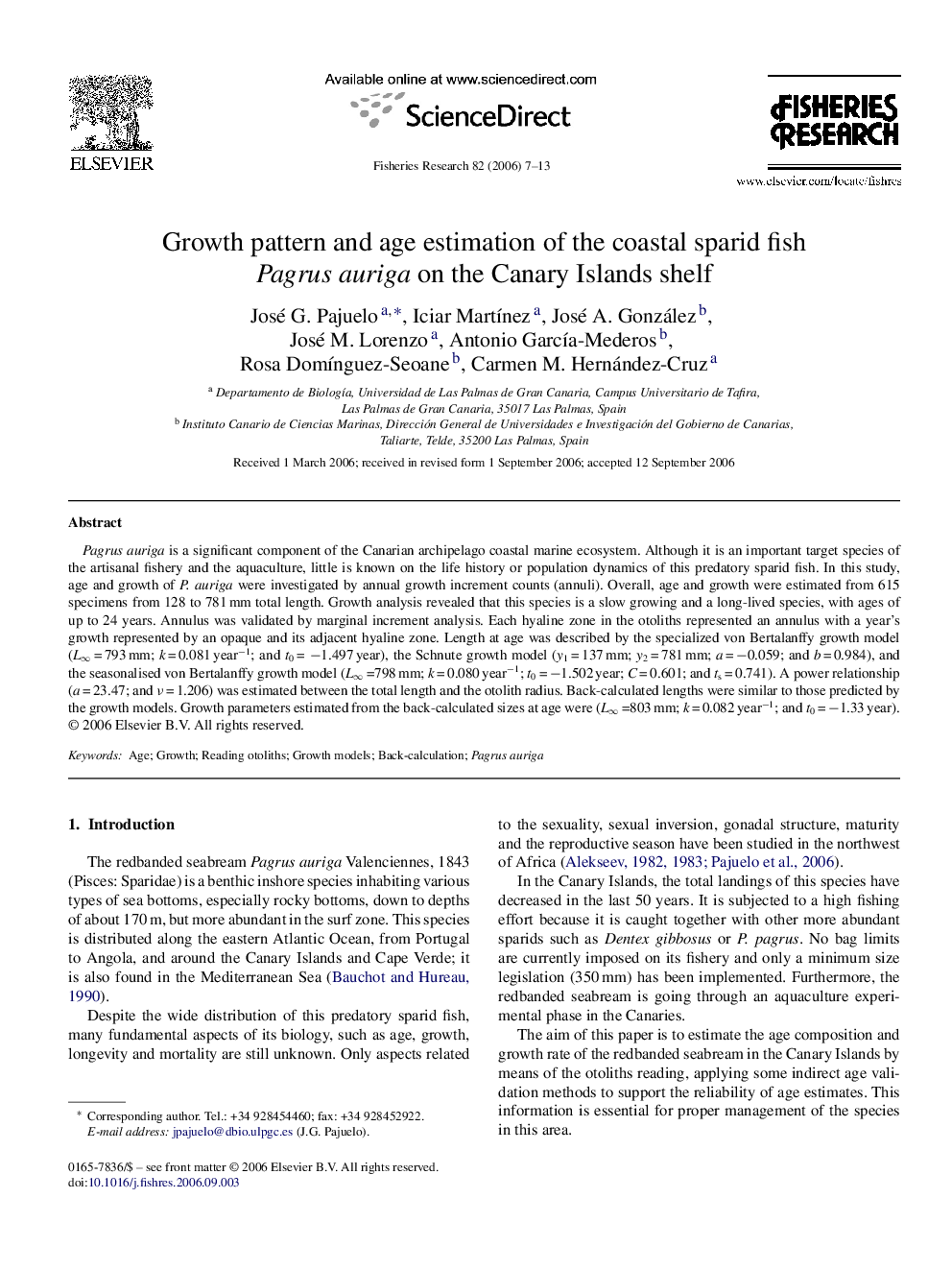| Article ID | Journal | Published Year | Pages | File Type |
|---|---|---|---|---|
| 4544820 | Fisheries Research | 2006 | 7 Pages |
Pagrus auriga is a significant component of the Canarian archipelago coastal marine ecosystem. Although it is an important target species of the artisanal fishery and the aquaculture, little is known on the life history or population dynamics of this predatory sparid fish. In this study, age and growth of P. auriga were investigated by annual growth increment counts (annuli). Overall, age and growth were estimated from 615 specimens from 128 to 781 mm total length. Growth analysis revealed that this species is a slow growing and a long-lived species, with ages of up to 24 years. Annulus was validated by marginal increment analysis. Each hyaline zone in the otoliths represented an annulus with a year's growth represented by an opaque and its adjacent hyaline zone. Length at age was described by the specialized von Bertalanffy growth model (L∞ = 793 mm; k = 0.081 year−1; and t0 = −1.497 year), the Schnute growth model (y1 = 137 mm; y2 = 781 mm; a = −0.059; and b = 0.984), and the seasonalised von Bertalanffy growth model (L∞ =798 mm; k = 0.080 year−1; t0 = −1.502 year; C = 0.601; and ts = 0.741). A power relationship (a = 23.47; and ν = 1.206) was estimated between the total length and the otolith radius. Back-calculated lengths were similar to those predicted by the growth models. Growth parameters estimated from the back-calculated sizes at age were (L∞ =803 mm; k = 0.082 year−1; and t0 = −1.33 year).
